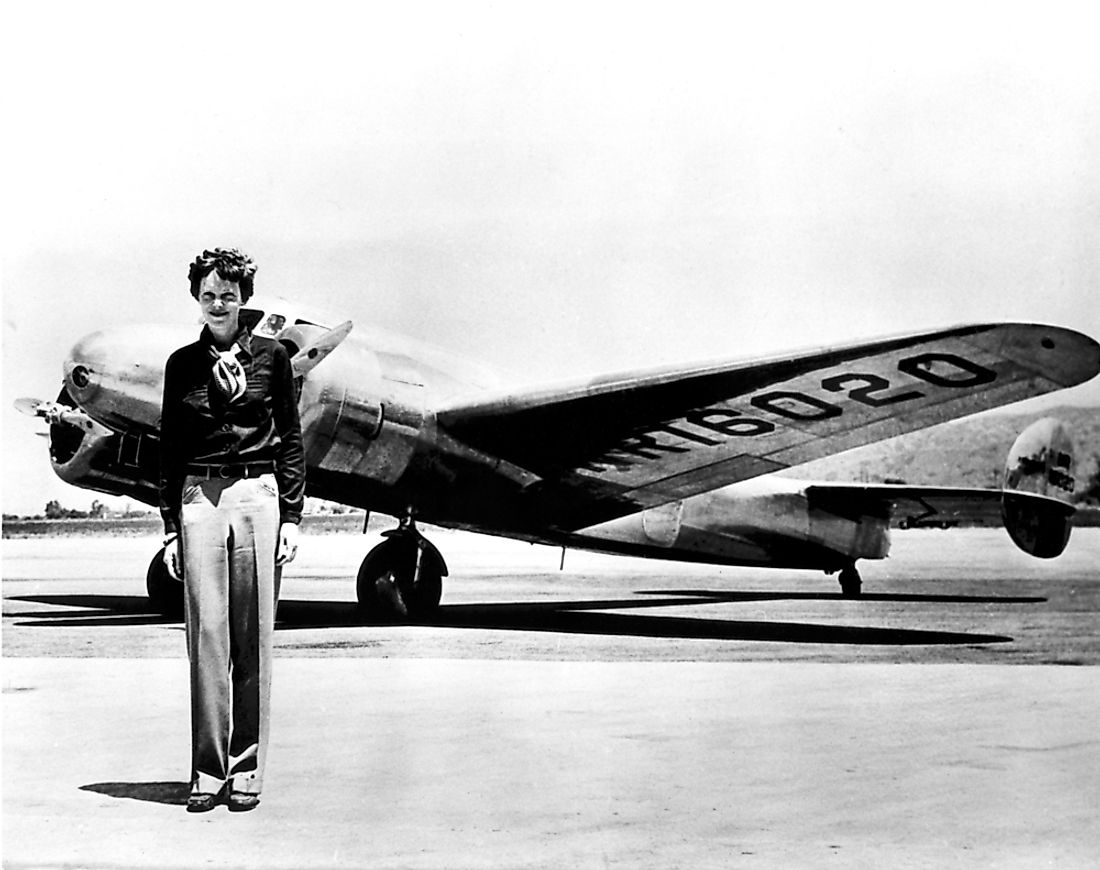The Mystery of Amelia Earhart

Amelia Earhart was a rebel from birth. Born on July 24th, 1897 in Atchison, Kansas, she always found ways to challenge the Victorian and Puritan expectations common to the time still set upon her and other women, defining "feminine" with a narrow scope. As a child, she even collected articles about successful women in male-dominated environments. She perfected a reckless sledding technique known as “body slamming,” which usually was seen only among boys. She wanted to cut her hair short, but had to do so slowly, bit by bit, so her mother would not notice. She was ten when she first saw airplanes on display at a state fair, and this experience sparked an interest in flying that never left her.
4. Career
In 1920, Amelia’s father took her to the Long Beach Air Show in California, where she paid $5 to take a short plane ride. As soon as the airplane lifted off the ground, she knew that she had to learn to fly someday herself. She worked odd jobs and saved up money to take flying lessons and, in 1921, she purchased her own plane, naming it "The Canary" for its bright yellow color. Her flying instructor, Anita “Neta” Snook, never saw Amelia as a highly skilled flyer. Her ambition and enthusiasm for flying, more than sheer skill, were what led her to become one of the world’s most famous aviators. A true pioneer, Amelia was the 16th woman in the world to receive a pilot’s license at the time.
3. Discoveries
Amelia went on to set many records in aviation. She set several speed records, especially in 1930 and 1931. On May 21, 1932, she became the first woman to fly solo across the Atlantic Ocean. Later in 1932, she formed and became president of the Ninety Nines, a women’s aviation club designed to promote female participation in flying. Over the next few years, Amelia embarked on more "firsts", and became the first person to fly solo between Hawaii and California, and the first person to fly solo from Los Angeles to Mexico City.
2. Challenges
Throughout her career, Amelia was always a woman in a man’s world. She lived in a time just as the women’s suffrage movement was starting to make headway, and she had to work hard to prove herself. This task never daunted her, and she quickly proved her prowess as an airplane pilot. Once the press began to take notice of her, she struggled to maintain the independence and personal space that were so important to her. Later in her career, she also struggled to adapt to changes in technology, and preferred to stick to old methods and technology in spite of advances in the field.
1. Disappearance
Amelia Earhart is perhaps most famous for her mysterious disappearance in 1937. She decided to embark on a record-setting flight around the equator. After travelling 22,000 miles and running into constant difficulties along the way, Amelia, and her navigator Fred Noonan, vanished somewhere over the Pacific Ocean. All searches for clues to this mystery have been fruitless. Yet her dramatic disappearance has only added to the legacy she left behind. Amelia once said her mission was to “produce practical results for the future of commercial flying and for the women who may want to fly tomorrow’s planes.” She accomplished this mission, and has inspired countless pilots and encouraged thousands of women across the country. Her organization, the Ninety Nines, still proudly supports female pilots today.







